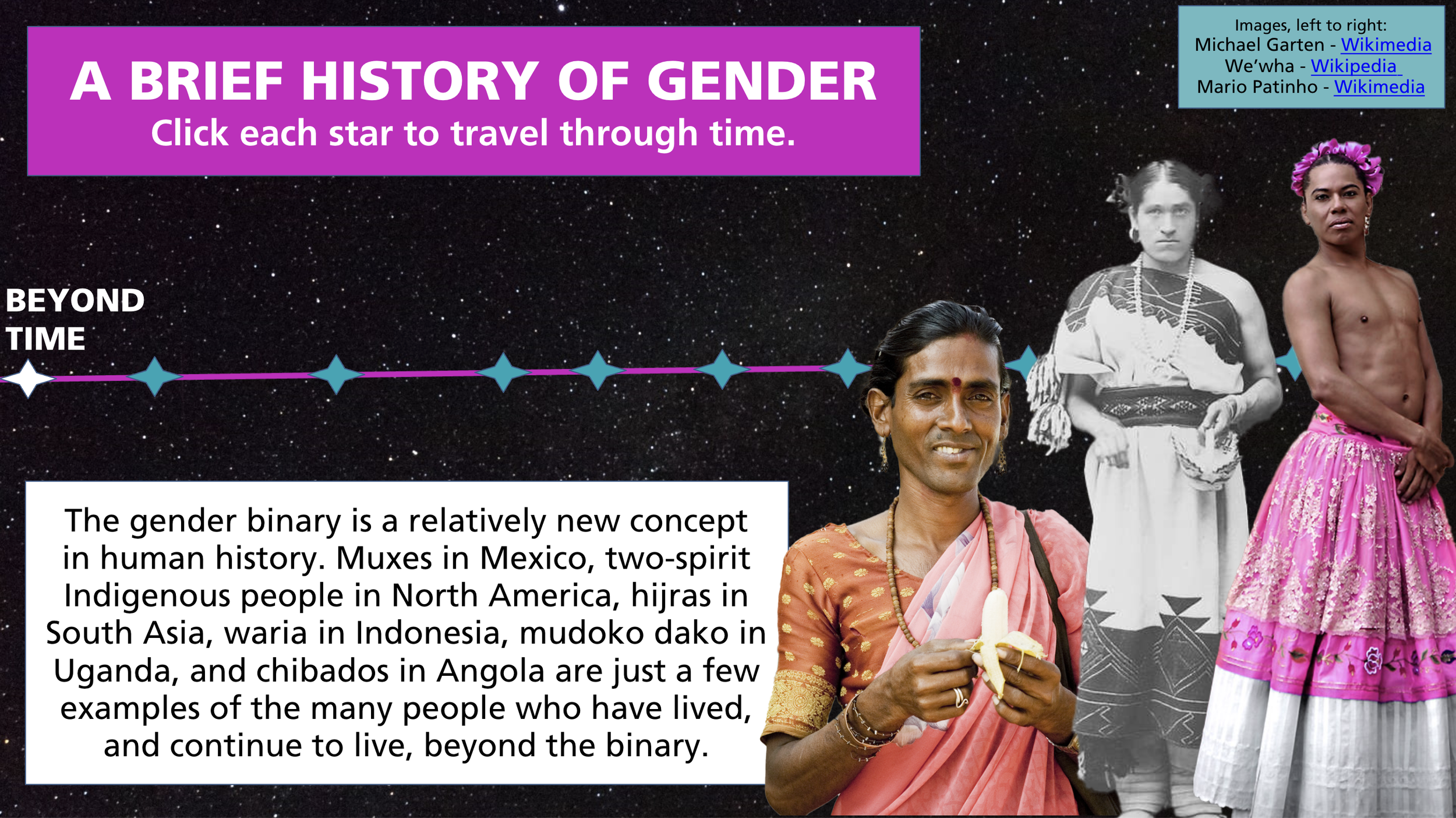
CASE STUDY
A Brief History of Gender
Interactive Timeline, Resource List, and Discussion Guide
The Stakeholders
Employees, managers, and executives at companies and nonprofit organizations.
The Tools
Adobe Photoshop, Articulate Storyline
The Problem
These are dangerous times for trans and gender expansive people. In 2023, in the US alone, 600 anti-trans laws were proposed in the US, and 87 passed. As we learned in 1930s Germany, transphobia signals accelerating fascism - and endangers us all.
Many trans and gender expansive people feel unwelcome, misunderstood, or unsafe at work and in their communities. Individuals, companies, and institutions have work to do to create material and psychological safety for gender nonconforming staff, clients, and communities. Letting go of rigid gender roles and creating welcoming, affirming environments is everyone's responsibility - and it's in everyone's best interest.
The Strategy
We need to focus on tangible actions we can take to create a safer, more inclusive world now. But studying history helps us to see the present more clearly, and gives us important clues about how we might change it. History also contains potent warnings about the consequences of inaction. With this project, I aimed to gather key historical insights into one short, concise, visually appealing ride - and to share evidence that gender is a cultural construct, not a biological reality.
I designed this timeline, resource list, and discussion guide as part of a larger campaign to help learners dismantle outdated binary thinking, and support gender expansive people in tangible ways. (The larger campaign includes self-reflection and social learning toolkits, accountability plans, a gender neutral communications guide, fundraising toolkit, and recommendations for inclusive administrative policies.)
Storyboard
Process Highlights
I listened to trans and gender expansive people share their lived experiences, challenges, joys, and actionable requests to increase equity, inclusivity, and safety.
I did extensive research, compiling a list of 42 resources on gender at the intersection of law, science, arts, culture, history, and racial justice - and narrowed it down to a list of 9 essential resources.
I crafted critical thinking questions for learners to process and integrate the information in the timeline via journaling or group discussion.
I used Google Documents to develop a storyboard, Adobe Photoshop to collect and edit images, and Articulate Storyline to develop an open-navigation eLearning experience. I used layers, triggers, and hotspots for a seamless user experience.
To maximize accessibility, I wrote ALT text for each image, tested colors with WebAIM’s Contrast Checker, and optimized Focus Order for screen readers.
I solicited feedback from L&D colleagues and iterated on the project until it was as smooth as possible.
Project Highlights
The Impact
Trans, and gender expansive people - as well as cisgender people - in my networks reacted that they found the timeline fascinating, inspiring, eye-opening, and affirming. I have used the timeline in my community organizing and popular education work to stimulate discussions, especially among people with cisgender privilege.
So far, these small experiments have resulted in learners:
Committing to act with more respect towards trans and gender expansive colleagues and community members, e.g., by using more gender affirming and gender neutral language.
Donating to Trans Justice Funding Project.
Committing to purchase more books, art, products and services from trans and gender expansive creators.
I look forward to collaborating with more people to implement this project, and similar projects, on a larger scale.


